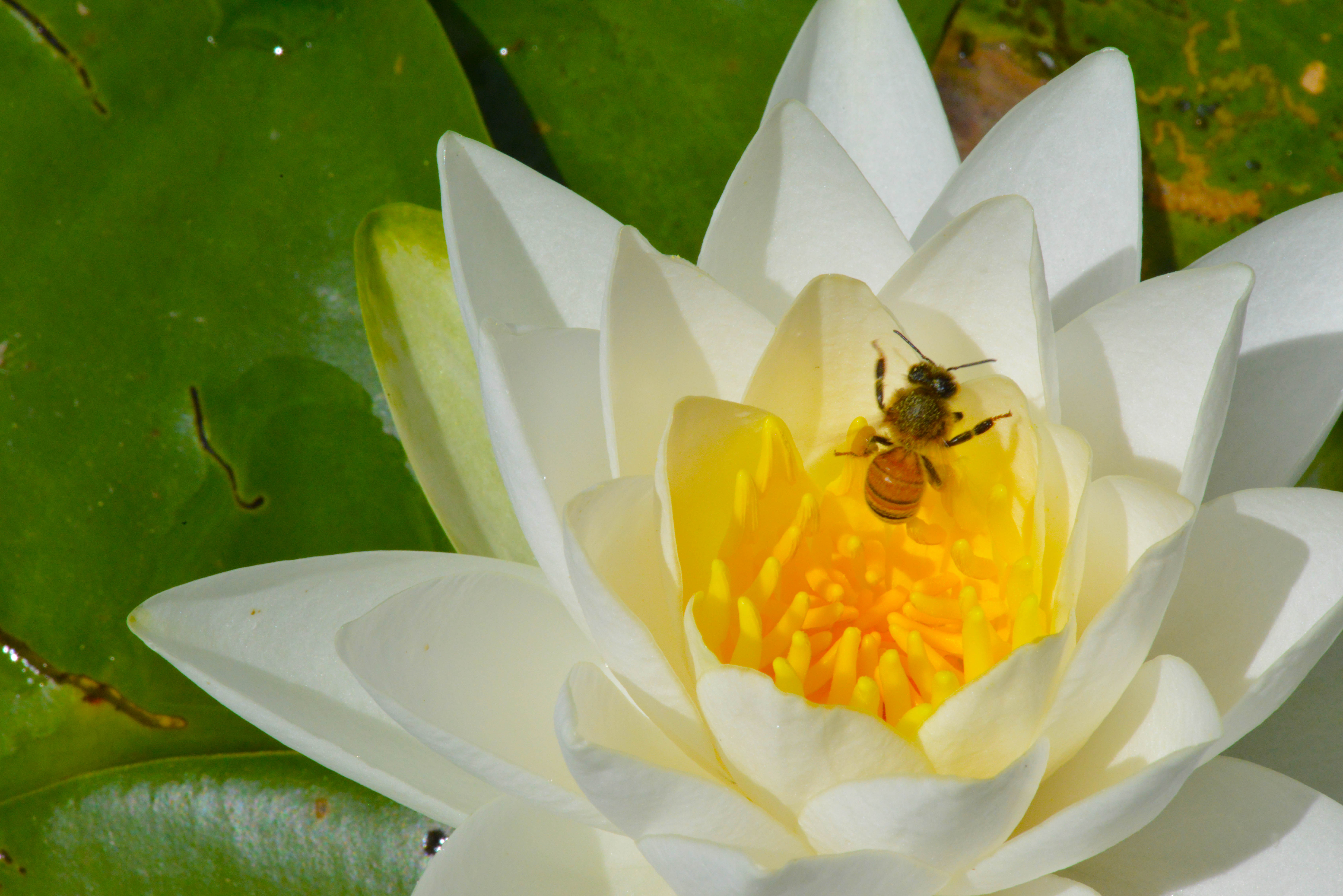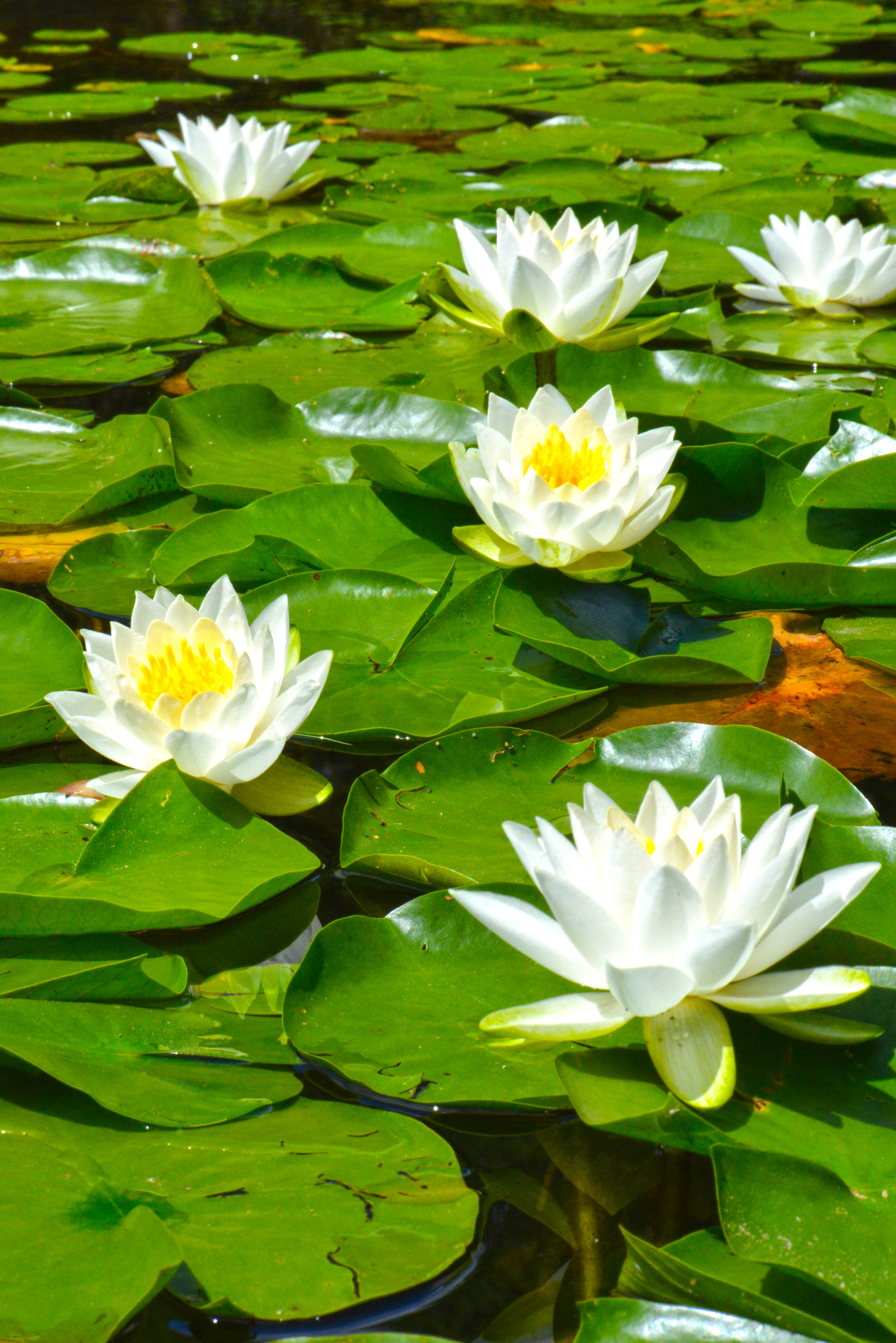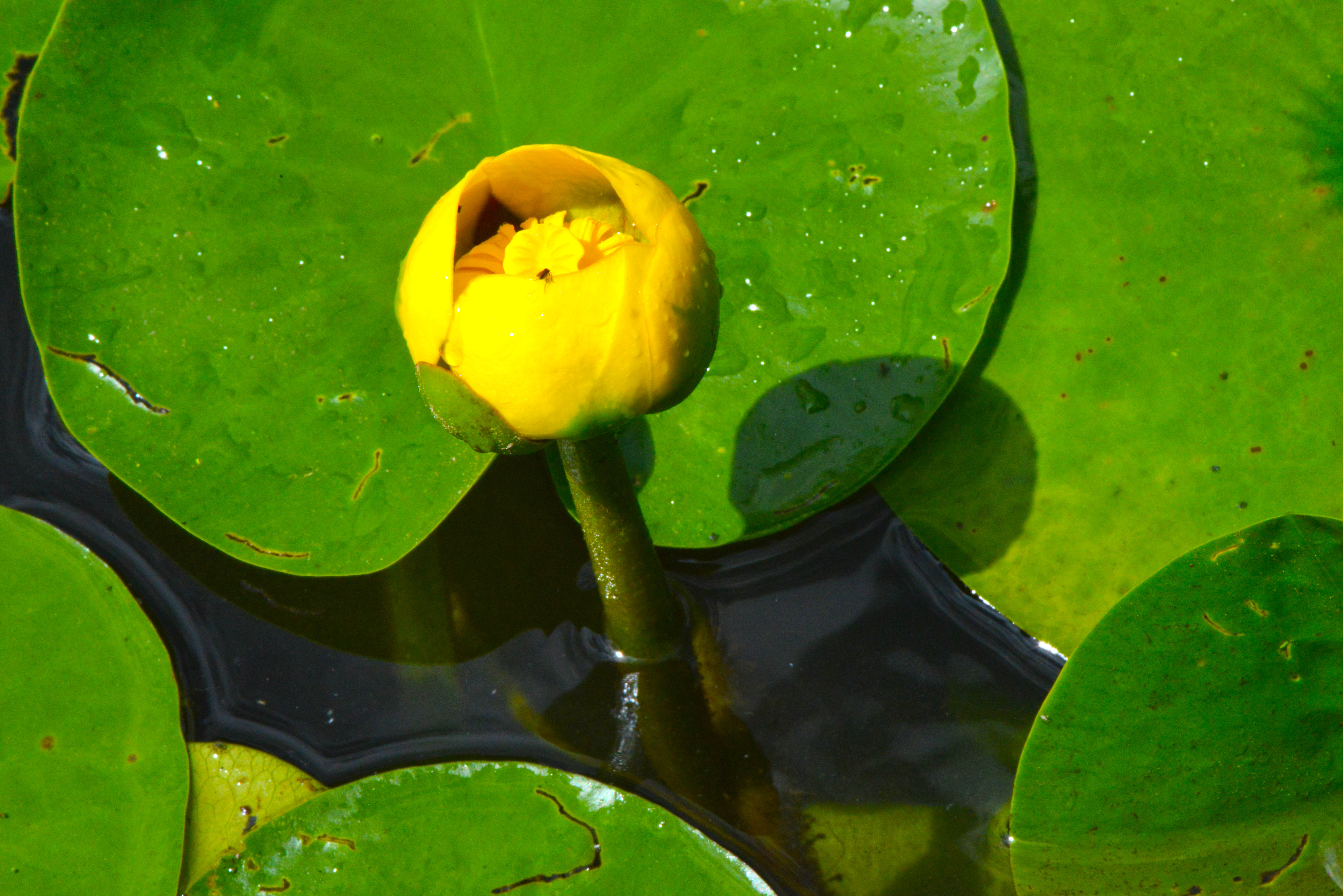Water Lilies
This seems to be the year for an abundance of chipmunks and water lilies.
There are two species of water lily commonly found in northeast US lakes and ponds:
Sometimes called “American Water Lily” or “Fragrant Water Lily”, it is native to the eastern U.S.
Fragrant water lily has an interesting pollination strategy. Each white flower has many petals surrounding both male and female reproductive parts, and is only open during the daytime for three days. On the first morning, the flowers produce a fluid in the cup-like center and are receptive to pollen from other flowers. However, they are not yet releasing pollen themselves. Pollen-covered insects are attracted by the sweet smell, but the flower is designed so that when they enter the flower, they fall into the fluid. This washes the pollen off their bodies and onto the female flower parts (stigmas) causing fertilization. Usually the insects manage to crawl out of the fluid and live to visit other flowers, but occasionally the unfortunate creature will remain trapped and die when the flower closes during the afternoon. On the second and the third days, the flowers are no longer receptive to pollen, and no fluid is produced. Instead, pollen is released from the stamens (the flexible yellow match-shaped structures in the flower center).
https://elrose.org/wp-content/uploads/2016/07/Bee_Lily.jpg

Visiting insects pick up the pollen and transport it to flowers in the first day of the flowering cycle. After the three days the flowers are brought under water by coiling their stalks. The seeds mature under water and after several weeks are released into the water. Water currents or ducks, which eat the seeds, distribute them to other areas. This flowering regimen is followed nearly throughout the summer, producing many eye-pleasing blooms and a large supply of seeds.
In addition to reproducing by seeds, water lilies spread by rhizomes. Anyone who has tried to curtail this plant’s growth in front of their dock knows how tenacious these root systems are. Also, if pieces of the rhizome are broken off during control efforts, they will drift to other locations and establish a new patch of lilies.
Native American Use
The fragrant water lily was utilized in many ways by Native Americans in the eastern United States. Roots of this and other water lilies were used medicinally as a poultice for sores and tumors, internally for many aliments including digestive problems, and rinse made for sores in the mouth. The leaves and flowers were also used as cooling compresses. In addition, the rhizomes were occasionally used as food and the young leaves and lower buds were eaten as a vegetable. Even the seeds were fried and eaten or ground into flour. Wildlife, including beaver, muskrat, ducks, porcupine, and deer also will eat the leaves, roots, or seeds. In moderate quantities the fragrant water lily can also benefit the lake by providing shelter and habitat for fish and invertebrates and shade to cool the water. (http://www.ecy.wa.gov/) From our floating platform observations, we know that both muskrats and beavers feed on water lilies.
The native yellow water lily variety, Nuphar polysepalum, (Spatterdock)
Yellow Pond Lilies provides great cover for wildlife, especially fish, aquatic insects, snakes, turtles, frogs, crayfish, salamanders, and other water creatures.
Beaver and Common Muskrats eat the rhizomes, and Beaver also eat the leaves.
Waterfowl, such as Wood Ducks, Mallards, and Canada Geese eat the seeds of Yellow Pond Lily.
Frogs, salamanders, and aquatic insects also use leaves and stems to attach egg masses.
Leaves, or lily pads, provide resting places for terrestrial (land) insects, such as dragonflies and bees.(http://www.fcps.edu/)

